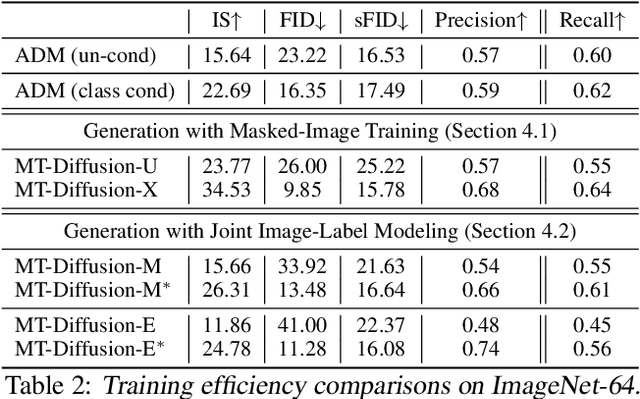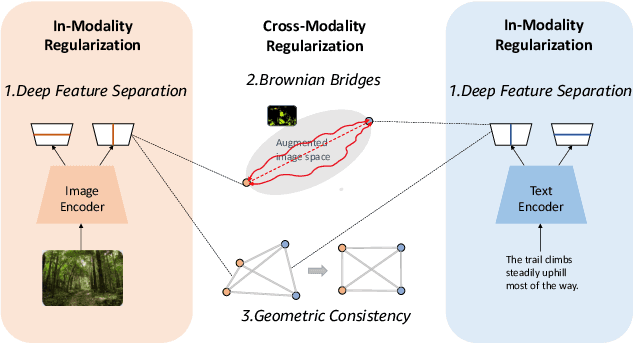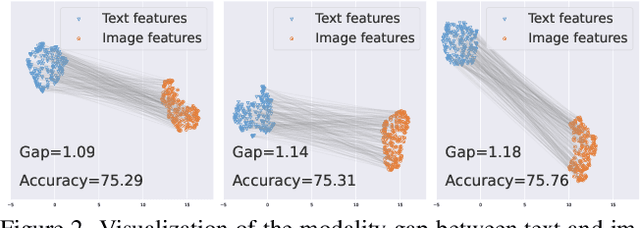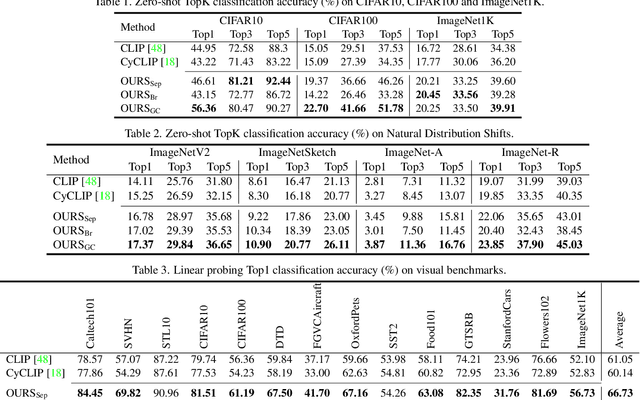Son Dinh Tran
Diffusion Models for Multi-Task Generative Modeling
Jul 24, 2024



Abstract:Diffusion-based generative modeling has been achieving state-of-the-art results on various generation tasks. Most diffusion models, however, are limited to a single-generation modeling. Can we generalize diffusion models with the ability of multi-modal generative training for more generalizable modeling? In this paper, we propose a principled way to define a diffusion model by constructing a unified multi-modal diffusion model in a common diffusion space. We define the forward diffusion process to be driven by an information aggregation from multiple types of task-data, e.g., images for a generation task and labels for a classification task. In the reverse process, we enforce information sharing by parameterizing a shared backbone denoising network with additional modality-specific decoder heads. Such a structure can simultaneously learn to generate different types of multi-modal data with a multi-task loss, which is derived from a new multi-modal variational lower bound that generalizes the standard diffusion model. We propose several multimodal generation settings to verify our framework, including image transition, masked-image training, joint image-label and joint image-representation generative modeling. Extensive experimental results on ImageNet indicate the effectiveness of our framework for various multi-modal generative modeling, which we believe is an important research direction worthy of more future explorations.
Understanding and Constructing Latent Modality Structures in Multi-modal Representation Learning
Mar 10, 2023



Abstract:Contrastive loss has been increasingly used in learning representations from multiple modalities. In the limit, the nature of the contrastive loss encourages modalities to exactly match each other in the latent space. Yet it remains an open question how the modality alignment affects the downstream task performance. In this paper, based on an information-theoretic argument, we first prove that exact modality alignment is sub-optimal in general for downstream prediction tasks. Hence we advocate that the key of better performance lies in meaningful latent modality structures instead of perfect modality alignment. To this end, we propose three general approaches to construct latent modality structures. Specifically, we design 1) a deep feature separation loss for intra-modality regularization; 2) a Brownian-bridge loss for inter-modality regularization; and 3) a geometric consistency loss for both intra- and inter-modality regularization. Extensive experiments are conducted on two popular multi-modal representation learning frameworks: the CLIP-based two-tower model and the ALBEF-based fusion model. We test our model on a variety of tasks including zero/few-shot image classification, image-text retrieval, visual question answering, visual reasoning, and visual entailment. Our method achieves consistent improvements over existing methods, demonstrating the effectiveness and generalizability of our proposed approach on latent modality structure regularization.
 Add to Chrome
Add to Chrome Add to Firefox
Add to Firefox Add to Edge
Add to Edge